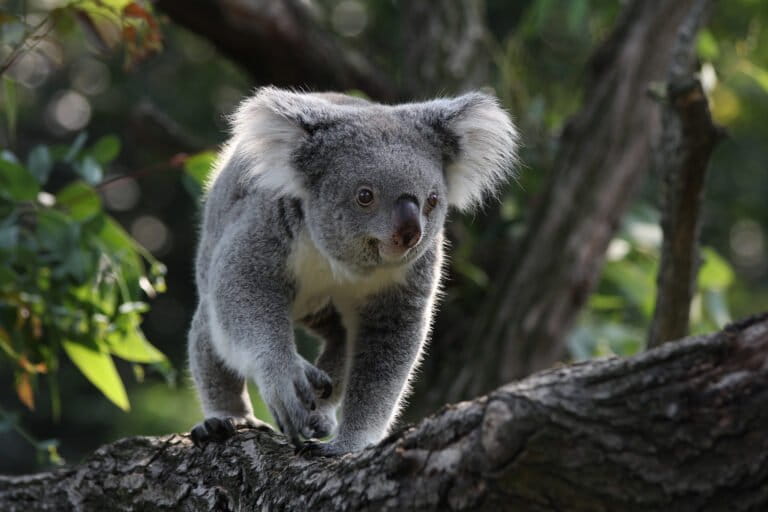- Local wildlife protectors cannot stop the trafficking of jaguars linked to demand for traditional Chinese medicine.
Pac-Man walks quickly, wags the tip of his tail, and shows off his fangs while panting. Suddenly he stops and slightly raises his left rear leg. He turns to see Cam walking steadily behind him. The jaguars then appear to lose each other in the Lacandon Jungle.
A hidden camera is the only witness to this scene in January 2019, in the Yaxchilán natural protected area of Mexico’s Chiapas state. Due to their solitary and nocturnal habits, it is rare to spot even one of the 115 jaguars that live here.
Pac-Man, a young jaguar of around five years old and 55 kilos, prowled an area of 400km2 through Yaxchilán and Chan-Kin, at times crossing the mighty Usumacinta River. This was the last time Pac-Man was recorded before he ended up in the hands of poachers.
Jaguars are trafficked for their fangs, claws, heads and genitals. The total price of parts from one animal, which are especially coveted by some wealthy Chinese, can reach US$20,000.
“Pac-Man rings alarm bells about the Chinese illegal trade in search of the jaguar in Mexican territory,” said Dr Rodrigo Medellín, whose laboratory at the National Autonomous University of Mexico (UNAM) is dedicated to studying jaguars in the Lacandon jungle. One of them was Pac-Man. “We are seeing this illegal trade throughout the continent… It’s obviously organized crime.”
Jaguars of the Maya Forest Program in collaboration with the community vigilantes of Frontera Corozal – CONANP
The links between the illegal wild cat trade and China were recently analysed in a paper published by Conservation Biology. It found the number of jaguar parts seized in South and Central America and China to have increased between 2012 and 2018. Of the 2,117 parts seized, 1,991 were teeth and 34% were linked to China.
“Source countries with relatively high levels of corruption and Chinese private investment and low per capita incomes had 10 to 50 times more jaguar seizures than the remaining countries,” the report found.
It is not the first instance of Chinese traffickers have preyed on Mexican wildlife. The Mexico–China route has been around for at least two decades, transporting totoaba fish, sea cucumbers, seahorses and sharks, according to official reports.
Medellín says urgent legislation that classifies killing a jaguar as a “serious crime” is needed, echoing a call from the Federal Attorney for Environmental Protection (Profepa) issued during the High Level Conference on Illegal Wildlife Trade in the Americas, held in Peru in October 2019.
“I would be very concerned that, in a country like Mexico, where there’s no clear reduction in and organised crime, a profitable market would spring up for jaguar parts because we have already seen what happened to the totoaba and the vaquita porpoise (…) It can get out of hand,” said María José Villanueva, director of conservation for WWF Mexico.
Traditional Chinese medicine (TCM) has been one of the main drivers of species trafficking, and big cats are feature prominently. In a new report by UK-based NGO the Environmental Investigation Agency (EIA), 24 Chinese pharmaceutical companies were shown to include leopard bones as an ingredient in their traditional medicines.
“This is just the tip of the iceberg,” said Aron White, an EIA wildlife campaigner and China specialist. “It is not just about leopards. Since September 2017, at least 46 government permits have been issued to trade or use parts of species that are under the highest levels of protection.”
Although the jaguar is not included in the list of nationally protected species in China, it does appear in Appendix I of the Convention on International Trade in Endangered Species of Wild Fauna and Flora (CITES) and should be treated as a species under special first-class state protection.
White told Diálogo Chino by email that the jaguar is not specifically referred to in TCM texts since it is not native to the region. But he explained that the language used in Chinese policy documents and TCM texts, on licenses and on packaging is ambiguous. In Chinese, the term “leopard bone” could refer to any species whose name ends in the leopard character and the jaguar is literally translated as “American leopard”.
The scene of the eco-crime
Park rangers found Pac-Man about 35 metres from the banks of the Usumacinta River with vultures encircling him. He had no head, legs, tail or genitals, and there were signs in the mud that he had been dragged. Hunters’ footprints were visible in the mud around his torso, rangers notified the National Commission of Natural Protected Areas (Conanp). Diálogo Chino corroborated the account with an unpublished report from Mexico’s Secretariat of Environment and Natural Resources SEMARNAT).
However, the Federal Attorney for Environmental Protection (Profepa) did not report the event. Nor did the Environmental Attorney’s Office file a criminal complaint with the Attorney General’s office, despite the jaguar being an endangered species in Mexico and having done so with other cases. Poaching is punishable by up to nine years in prison. Profepa did not respond to Diálogo Chino’s request for comment.
This pattern of cutting the head and claws is similar to what happens in China. Some reports in Suriname make us think it is associated.
Some guards who wished to remain anonymous said that, driven by drought, Pac-Man came down the river at night to drink water and was shot by traffickers from a boat as they sailed downstream. Others suggested he was killed in Guatemala and his remains were dumped in Mexico. Such operations are common in the area. Gunshots are heard every night. Rangers fear for their lives and because they have no legal authority to stop or carry weapons, traffickers pass right under their noses.
The guards say the traffickers are from the Guatemalan communities of La Técnica, Arbolitos and La Esperancita. The hunts, they say, aren’t driven directly by the need for the poachers to support their families, but rather by criminal networks.
“Since the jungle on the Guatemalan side has been cut back, the easiest thing for them is to cross the river with their boat and they begin to prey… It should be made clear that not all inhabitants are people linked to other organisations beyond those villages,” according to an environmental watchdog who requested anonymity for fear of reprisal.
Chinese demand
Pac-Man’s corpse was identified by a mark on his left side, which resembled the video game character. The biologist Paulina Arroyo, head of the Jaguar Monitoring Program of the Maya Forest, both christened Pac-Man and identified his remains.

Members of Rodrigo Medellín’s team – Antonio de la Torre, and doctors Arroyo Cassaigne and Ivonne Cassaigne – were dismayed. They had experienced this bitter taste before, but that was due to deaths that occur in communities, where locals “take revenge” on the cats for devouring cattle. They deal with this problem by working with communities.
De la Torre, who coordinates the study of jaguars in the Lacandon Jungle, asked: “Why didn’t they take him away completely? Not even the skin was taken away. They knew that was the most valuable part.”
An incisor can fetch US$1,500 in the US and $5,000 in China. For the set of skin, claws and genitals, between US$2,000 and $3,000 dollars are paid locally, while in Shanghai, China, they can reach $20,000.
“This pattern of cutting the head and claws is similar to what happens in China. Some reports in Suriname make us think it is associated,” explains de la Torre, referring to the report “Exploitation of the jaguar, Panthera onca and other large forest cats in Suriname,” published by WWF in 2010.
Interviewees recall that a decapitated jaguar was found floating in neighbouring Belize in January 2018. The authorities offered a reward for information leading to the capture of the culprits, but they were never found.
Species traffickers subcontract hunters and traffickers from towns near the areas. Chinese traffickers hire poachers from the Yucatan Peninsula to extract sea cucumbers. The same is true in the northwest of the country with totoaba fish.
According to former Profepa officials, Asian intermediaries –mainly Chinese – who camouflage themselves as tourists carry out subcontracting. Once they have the product, they may transfer it by land to Mexico City and, via the international airport, to Shanghai. This is the same route the critically endangered totoaba fish takes.
Threats
Jaguars are the third-largest feline in the world, after the Siberian tiger and the lion. They are found in 18 of the 21 Latin American countries where they suffer from habitat loss and illegal hunting are rife.
Internationally, the species is “near threatened”, according to the International Union for Conservation of Nature (IUCN)’s Red List. In Mexico, it is in danger of extinction and hunting is prohibited.
To tackle this problem, Mexico launched the 2030 Jaguar Plan along with by 18 other nations and various organisations including WWF and the UN Development Programme which, according to Villanueva of WWF Mexico, seeks to protect natural areas, strengthen biological corridors, develop public policies to protect the natural environment, work with communities and combat illegal hunting.
In 2018, there were an estimated 4,800 jaguars left in Mexico, according to the National Jaguar Census undertaken by the Institute of Ecology at Mexico’s National Autonomous University (UNAM), Conanp and the WWF-Telmex Telcel Foundation Alliance.
Pac-Man was tracked from October 2015 to January 2019, and Cam from June 2016 onwards. She and possibly her young, will face a new problem on this border territory where traffickers outnumber the authorities, where they and their funders operate with impunity and threaten rangers powerless in the face of budget cuts.
This text is part of a journalistic collaboration between Mongabay Latam and Diálogo Chino. This English translation was first published here.













